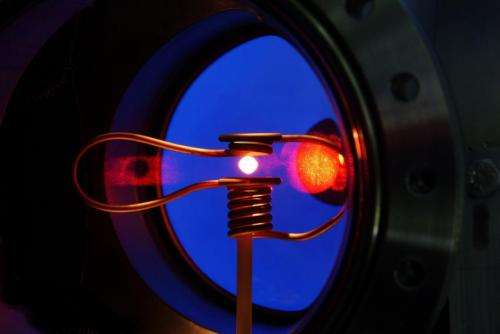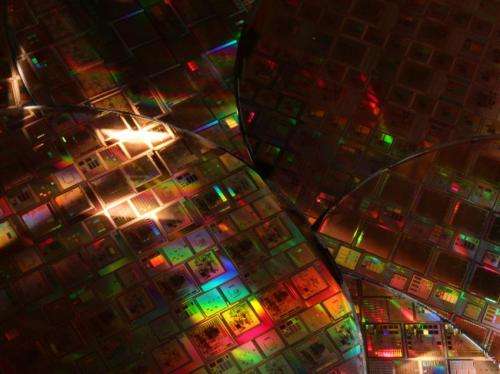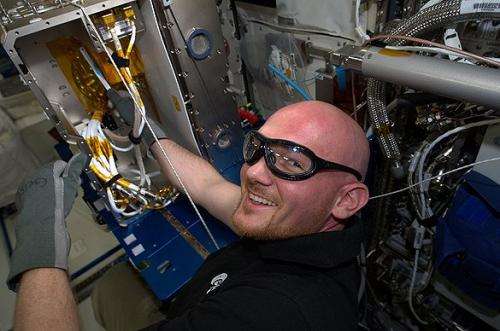Researching the physics of cooling liquid metals adds levity to Space Station

Sure, it's easy to say that research in microgravity is cool, but the European Space Agency's (ESA) new electromagnetic levitator brings new meaning to the word. A new ESA facility aboard the International Space Station will serve as a furnace capable of levitating and heating metals up to 3,632 degrees Fahrenheit. Having such a facility in microgravity will allow scientists to observe fundamental physical processes that occur as liquid metals cool.
ESA's final Automated Transfer Vehicle (ATV-5) mission to the space station delivered the Materials Science Laboratory Electromagnetic Levitator (MSL-EML) and its first batch of new materials science investigations. EML research will provide insight into how liquid metals cool without the influence of gravity or the mold that encases the cooling metals.
"In all of the experiments, microgravity enables access to conditions and measurements that are difficult or impossible on the ground," explained Robert Hyers, Ph.D., professor of Mechanical Engineering at the University of Massachusetts, Amherst, and co-investigator of EML Thermolab.
Most metals used in our daily lives are alloys, mixtures of two or more metals or metal and another material. A well-known alloy is stainless steel, used to make utensils and kitchen appliances, among other items.
The traditional process of casting alloys includes heating, shaping and then rapidly cooling them to create a specific form. Rapid cooling hardens the alloys into a solid structure while also forming their microstructure. Solid alloys form mixed structures composed of crystals that make up their microstructure, which impacts the characteristics of strength, flexibility and resistance to fatigue.
EML processes one sample at a time. Each sample is suspended in weightlessness and supported by magnetic repulsion, the force that pushes like ends of magnets apart. The sample is heated to liquefaction. No containers are used to hold the metals during experiments in the EML so measurements of the heated metals can be taken in purest form. In contrast, ground studies of alloys must use containers to hold the heated liquid forms.

One of the studies in this first batch of EML investigations is Thermolab. This collaboration involves 15 countries on three continents and is led by Professor Hans Fecht at Ulm University in Germany. Thermolab includes a number of samples with multiple experiments per sample occurring during the next two to five years.
"The basic goal is to provide the fundamental information needed to use modern computers to accelerate the rate of innovation in manufacturing and materials engineering," said Hyers.
To accomplish that goal, Thermolab will investigate temperatures and physical properties of industrial alloys in the liquid phase. This helps scientists improve models of industrial casting and solidification processes for materials used in the aerospace, automotive and consumer electronics industries.

These new EML investigations have the potential to impact how scientists develop lighter, higher-performing alloys for use both on Earth and in space travel. This first batch of at least seven investigations, including Thermolab, share samples to be processed in MSL-EML and the resulting data. Several of the studies will be conducted during 2015.
"Space exploration benefits even more from the better understanding of materials processing," explained Hyers. "3-D printing is getting a lot of current attention, including for the production of low-volume, complex parts like those used in rockets or potentially new parts for the space station. Making those parts in microgravity will require the kinds of models that Thermolab enables."
Although the metals heated in the EML during these studies might find this research to be red hot, scientists who study these materials and the people who may one day benefit from the results might say levitating liquefied metals in space is pretty cool.
Provided by NASA




















